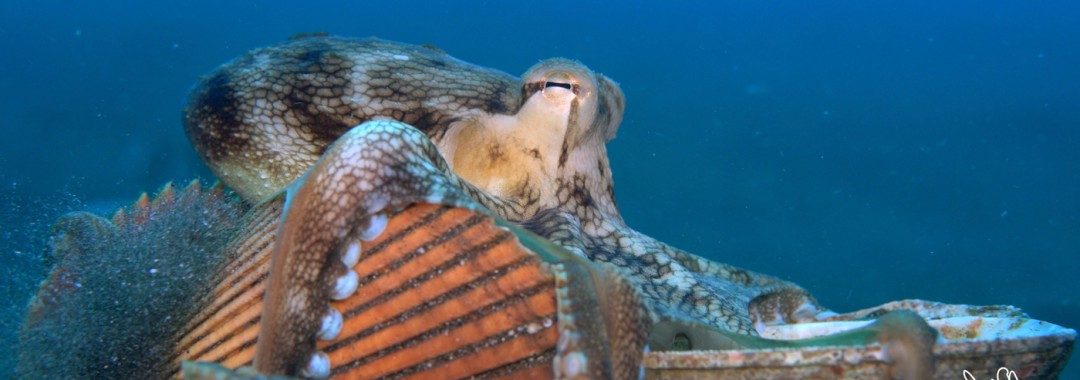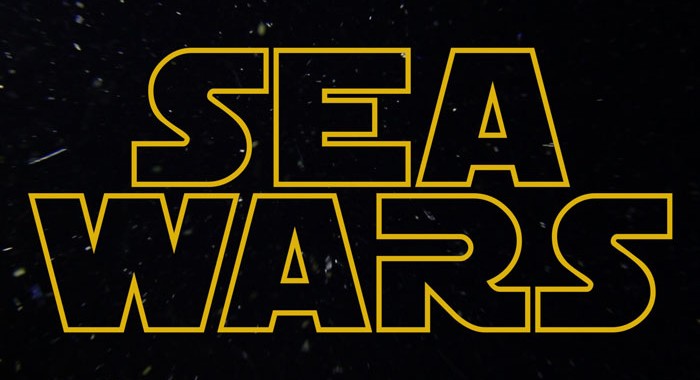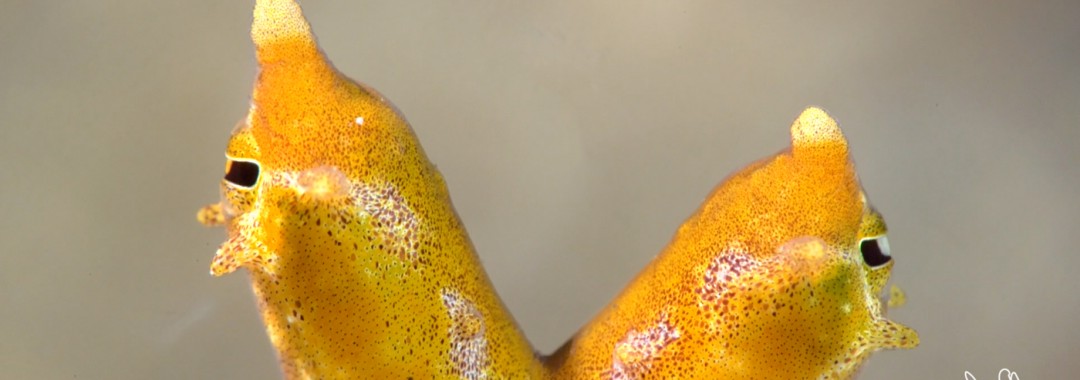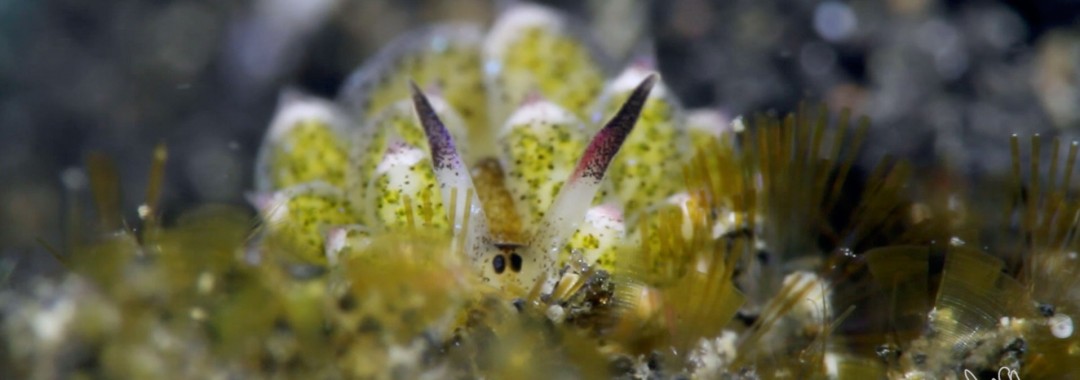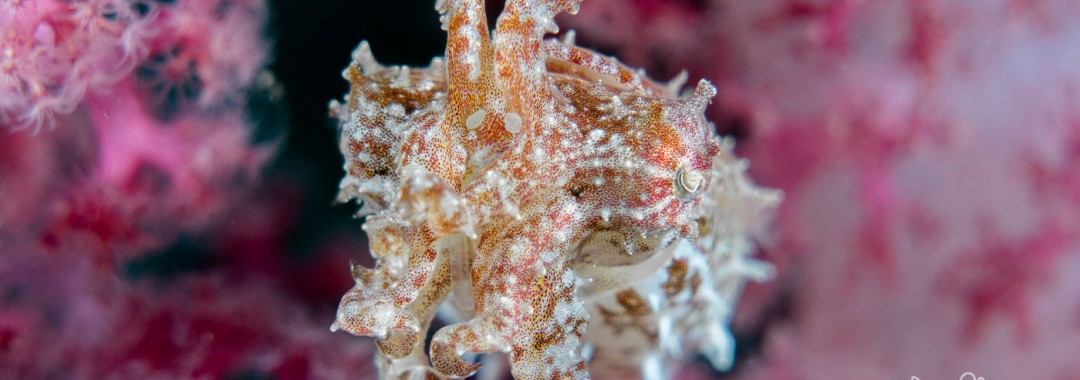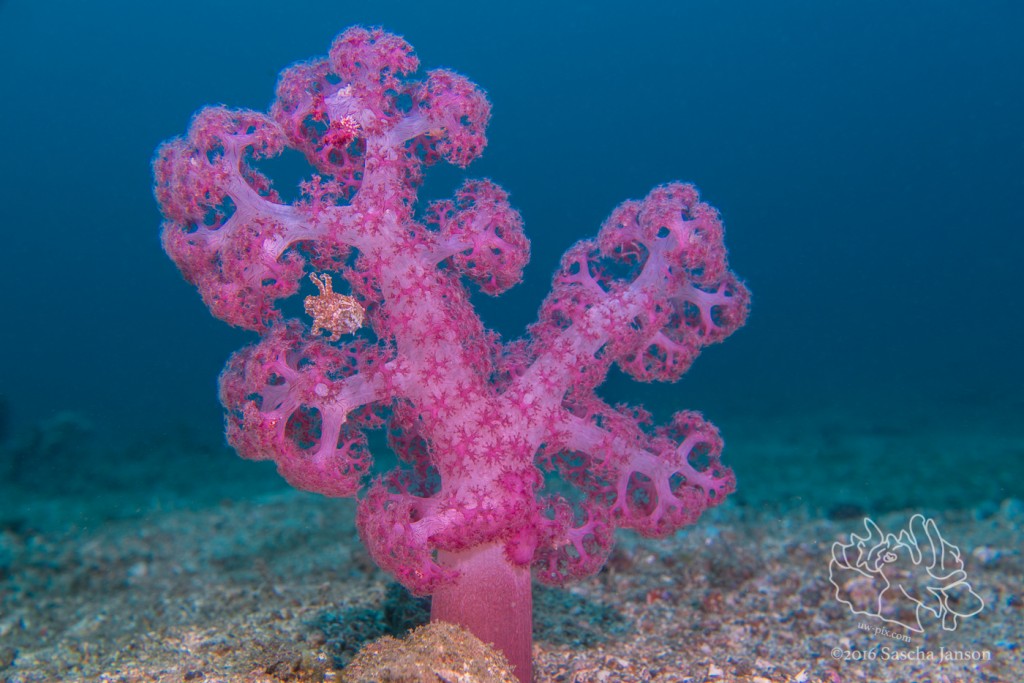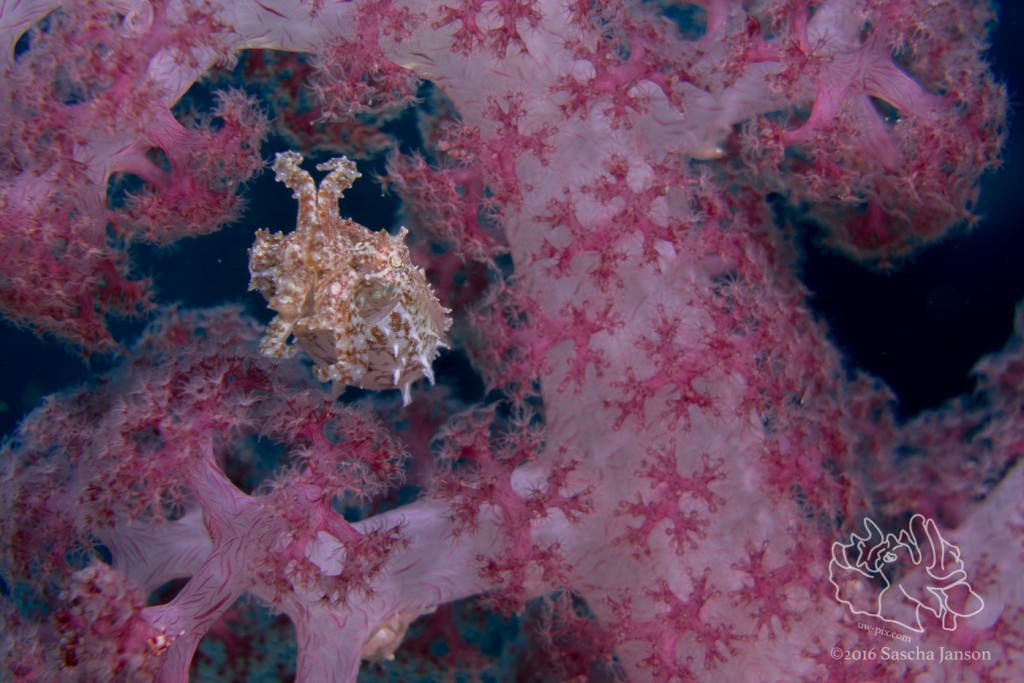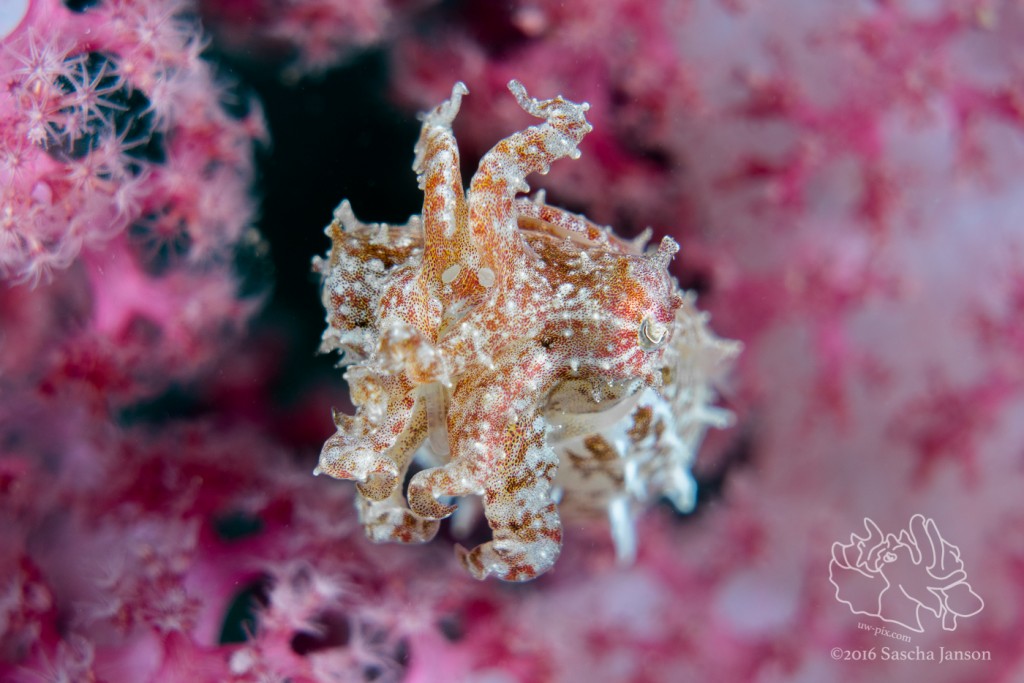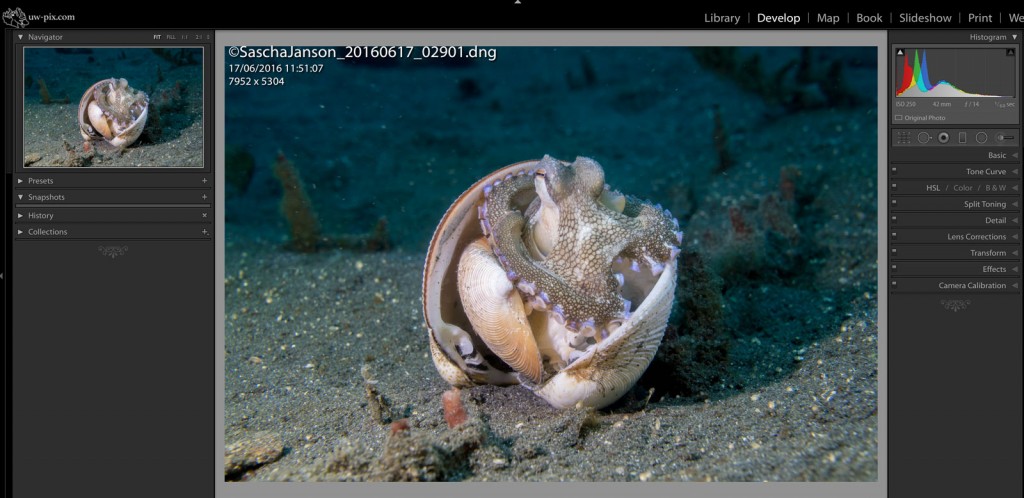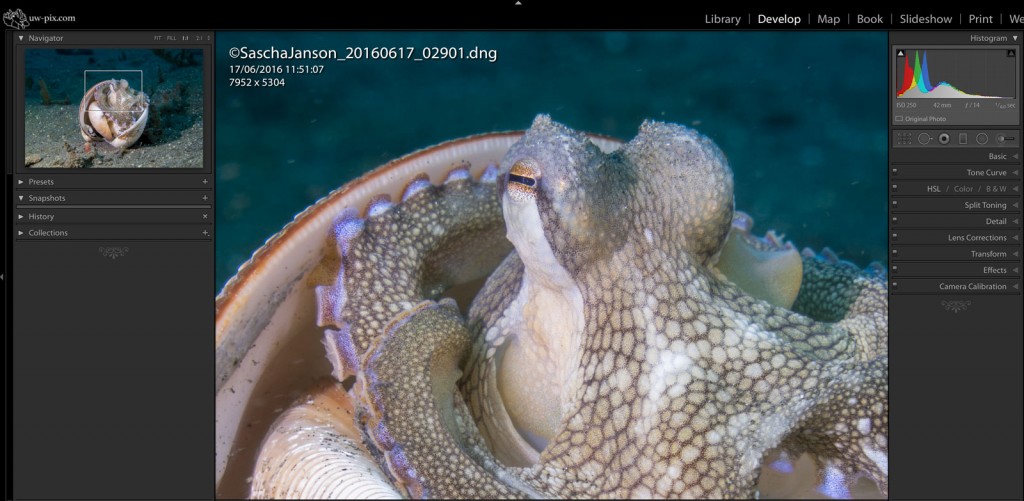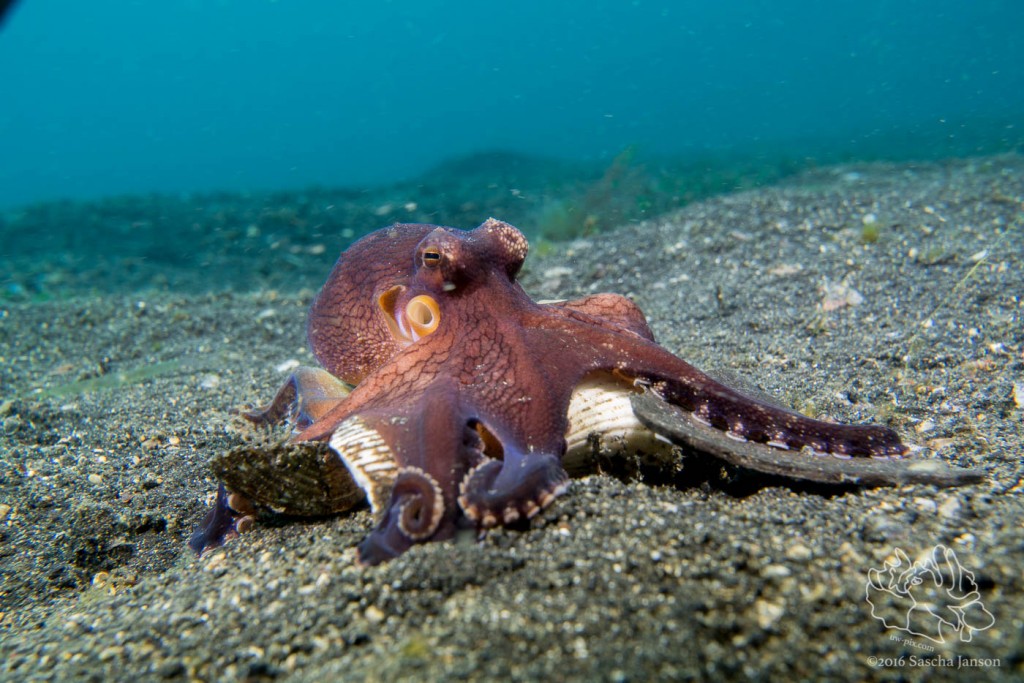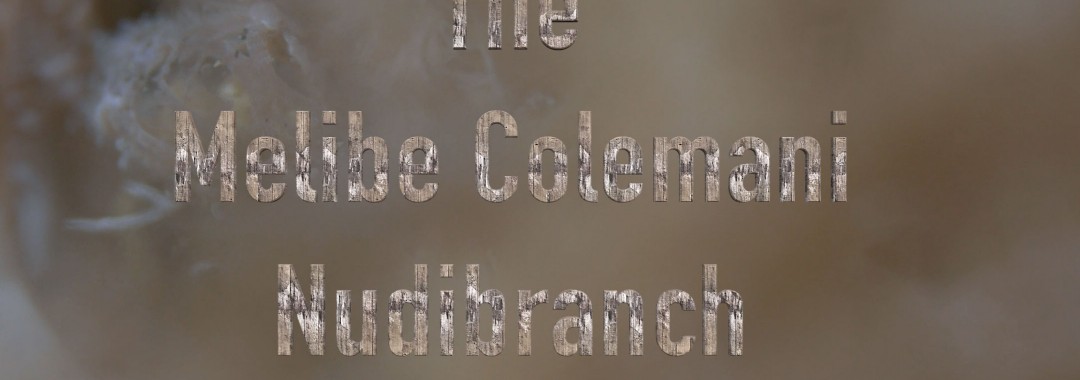In the last few months we’ve been very lucky and have had an extraordinary number of coconut octopuses (Amphioctopus marginatus) on dives in Lembeh. These intelligent critters are the only mollusk known to use tools, and everyone who sees them agrees they have the most fascinating behaviour! Other awesome sightings included harlequin shrimp, hairy frogfishes galore and the rare magnificent shrimp goby with its sail-like dorsal fin and dapper red-and-white partner shrimp. We hope you enjoy the video as much as we do!
Category Archives: Videography
Critters of the Lembeh Strait | SEA WARS – Fighting Mandarin Fish
It’s hard to believe such a beautiful species as the mandarin fish (Synchiropus splendidus) can be so cut-throat when it comes to territorial battles, but make no mistake, these guys don’t mess around when another male comes in to try and muscle in on their harem. Finally the ‘sheriff’ makes an entrance at the end and breaks up the dirty fight!
Critters of the Lembeh Strait | Episode 10 – 2016 | September Highlights
We guarantee you have never before seen some of the crazy critter action featured in this week’s video; have you ever seen a video close up of the eye of an elegant sand diver? No? What about this eye with a shrimp on it? Didn’t think so. This and many more bizarre and beautiful surprises in this will make you wish you were here. What was your favorite part?
Critters of the Lembeh Strait | SEA WARS – The Flamboyant Cuttlefish Strikes Back (Part II)
In part I of this series, we saw a newly hatched flamboyant cuttlefish (Metasepia pfefferi) getting snatched up by a small mantis shrimp, a surprising choice of meals since they are widely (but perhaps wrongly) believed to be toxic. In this latest episode II, we see a reversal of roles when an adult flamboyant cuttlefish snatches a mantis shrimp to feed on, so it’s not always predictable who is the hunter and who is the prey between these 2 species! The slow-motion part of this underwater video shows in amazing detail how the flamboyant carefully extends its two feeding arms, then at lightning speed grabs its prey and grips the mantis with its suckers, waiting until the mantis tires before consuming her crispy crustacean meal.
Critters of the Lembeh Strait | SEA WARS – Flamboyant Cuttlefish vs. Mantis Shrimp (Part 1)
Flamboyant Cuttlefishes have the reputation of being highly toxic, but newer studies show that it might not be true and more research has to be done. Unfortunately the action in this video was so fast and unexpected, that I could not see what happened after the attack.
Critters of the Lembeh Strait | Episode 09 – 2016 | August Highlights
This time of year often brings slightly cooler water temperatures in Lembeh and to our delight, we’ve noticed many more baby frogfishes are around than normal. Coincidence? We think not! Some of these ultra-cute froggies are in this video as well as footage of rare nudis like the Phyllodesmium koehleri and one of the weirdest, most unusual critters we’ve ever seen – a bizarre polychaete worm (Diopatra Sp.) that looks like a cross between a bobbit worm and a furry-legged bristle worm! Enjoy this up-to-the-minute glimpse of what’s going on in Lembeh.
Critters of the Lembeh Strait | “Grazing” – Sheep of the Costasiella Family
Many know these adorable little sap-sucking slugs (technically not nudibranchs) as ‘Shaun the Sheep’, due to their resemblance to sheep grazing on grass. They are tiny (from just a millimeter up to about 12 millimeters maximum length) and can be found feeding on the host algae Avrainvillea spp which looks like a large, single, round green leaf which sticks up vertically out of the sand on Lembeh’s muck sites. They are members of the Sacoglossa family which is the only group of animals known to engage in kleptoplasty, a process where the sea slug stores chloroplasts from the algae it feeds on in its body and benefits from the food they produce via photosynthesis. In this detailed, close-up footage you can actually see the chloroplasts in the animals’ cerata (the pointy bits on the back), impossible to observe with the naked eye due to the creatures’ tiny size. Enjoy this detailed video showcasing a cute and also fascinating Lembeh critter and be sure to have a look to try and find some yourself next time you dive in Lembeh!
Critters of the Lembeh Strait | Episode 08 – 2016 | July Highlights
This episode features some of the highlights of July, including a lot of baby frogfishes, oodles of nudibranchs (including the Melibe colemani) and some awesome cephalopods like the wunderpus and flamboyant cuttlefish. The king of photogenic fishes, the weedy scorpionfish (aka ‘Rhinopias frondosa’), also makes an appearance in some moody and dramatic lighting. Enjoy the dive!
Critters of the Lembeh Strait | The Melibe Colemani
For many nudibranch lovers the “Melibe colemani” tops their list of must-see creatures. This critter is so perfectly camouflaged that it is very hard to spot – it lives in the waving polyps of a Xenia family coral (Anthelia) where it hunts tiny organisms by extending its large oral hood. If you watch carefully, you can see at 50 seconds into the film how a small brown acoel flatworm (Waminoa sp.) living on the base of the coral flees the attacking Melibe! Best watched in 4K!
